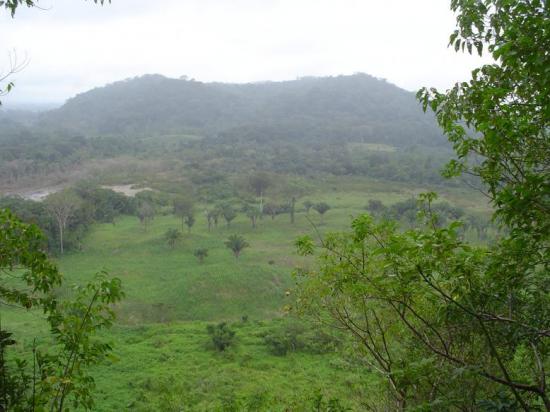Source - http://www.hispanicallyspeakingnews.com/latino-daily-news/details/expert-discovers-industrial-salt-processing-plant-in-ancient-mayan-city/27320/

Tortugas salt dome with buildings from site epicenter of the foreground and salt flake
An industrial salt processing plant of the Maya Preclassic Period in Guatemala, which produced as much as 24,000 tons of salt per year, was discovered at Salinas de los Nueve Cerros (Saltworks of the Nine Hills), one of the most ancient cities of the Mayan civilization, American archaeologist Brent Woodfill said.
The expert said he began his research in 2009, though he added the site was first visited in the late 19th century by German geographer Karl Sapper, who after a brief study returned to his country with part of a sculpture that is today exhibited at Berlin’s Dahlem Museum.
In 1975, U.S. archaeologist Brian Dillon was the second to visit the site, and in 1990 uncovered a number of massive containers there for storing salt.
Woodfill said the archaeological site is along the Franja Transversal del Norte tollroad in the province of Alta Verapaz, some 220 kilometers (135 miles) from Guatemala City, and is a 30-square-kilometer (12-square-mile) valley of wetlands fed by the Chixoy River.
The expert told a press conference that according to evidence found by the team of 20 U.S. and Guatemalan archaeologists, the Mayas of that period were able to produce up to 24,000 tons of salt per year.
Production was done by means of the artisanal craft of boiling water from a salty river flowing from a natural dome in the middle of the site.
Woodfill, the director of the project, said the product was transported for trading to the lowlands of Peten and Alta Verapaz provinces in northern Guatemala, and to Chiapas in southern Mexico, across the Chixoy and Usumacinta Rivers.
Ancient Mayas reduced the salt brine in cup-shaped vessels, then poured them into large, flat molds to make blocks of salt for export, after first stacking them in huge containers - somewhat less than 2 meters (6 1/2 feet) in diameter - which they then stored underground all around the city’s industrial area.
The origin of Salinas de los Nueve Cerros dates back to the mid-Preclassic Period (1000 B.C. to 800 B.C.), and during the Late Classic Period (600 A.D. to 900 A.D.) the city expanded its economy so it was not only based on salt but also on agriculture and the export of obsidian knife blades, Woodfill said.